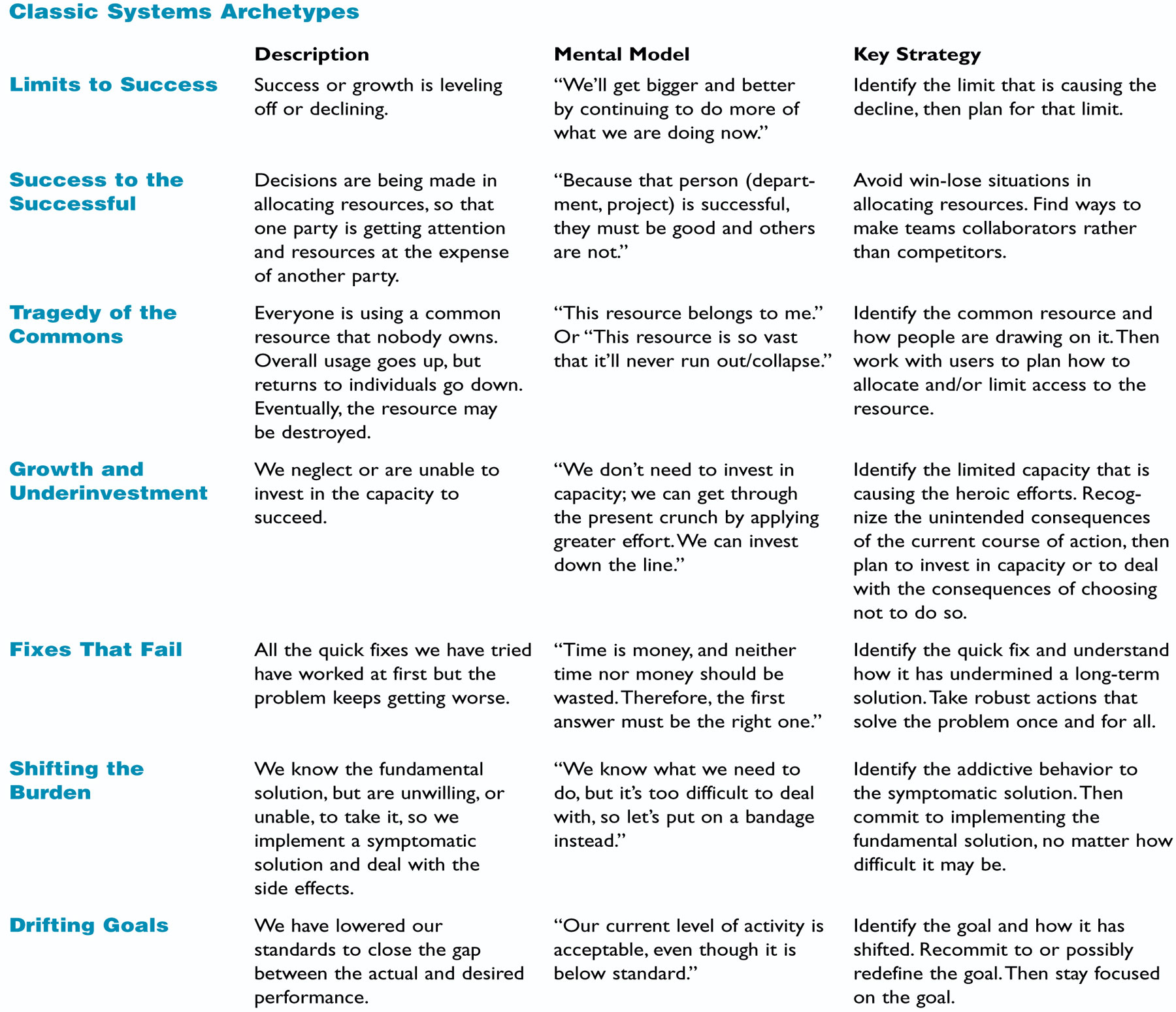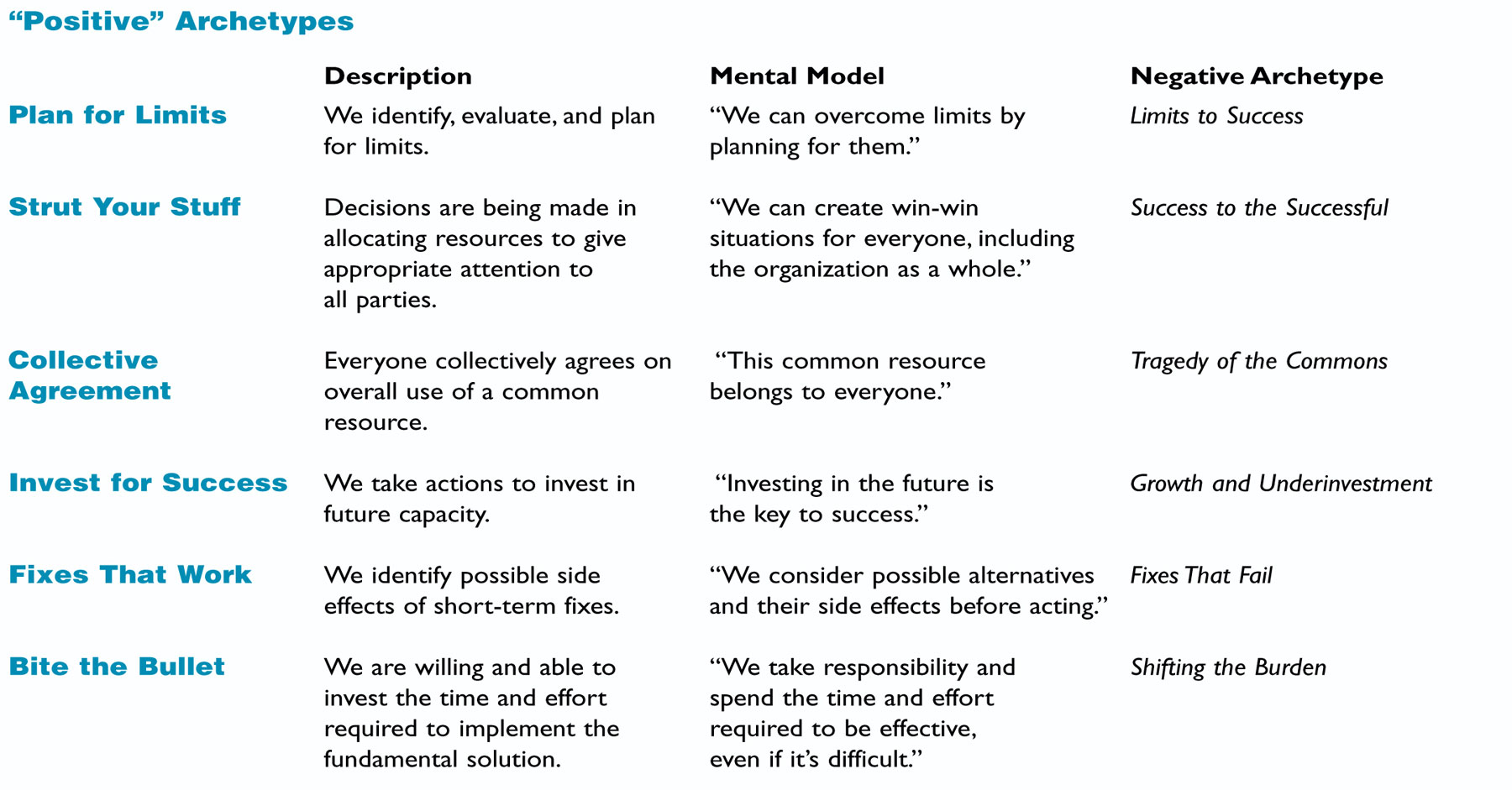Many readers of The Systems Thinker are familiar with the systems archetypes developed in the mid- 1980s based on the work of Jay Forrester, a prominent researcher and one of the greatest minds in systems thinking in the 20th century. Jennifer Kemeny, Michael Goodman, and Peter Senge identified generic patterns of behavior that occurred over and over in different kinds of systems. There were eight original systems archetypes; two more have been added over the years. The archetypes include causal loop diagrams that depict the dynamic behavior that drives the problems and a set of strategies to address the issue using leverage points. Leverage points are actions that use the least amount of effort to produce the greatest change in the system. These two aspects of archetypes—universality and strategies—make them useful for solving complex problems.
Below are summaries of these archetypes, including a description of the structure, the mental model that drives it, and a key strategy for dealing with it.


The “Positive” Archetypes
In 2000, we were testing our systems thinking approach with a group of people when Esther Wilcox Hudson, one of our colleagues, questioned the perspective from which the 10 archetypes operated. Esther noticed that they described a complex system from the perspective of what was not working—a pessimistic or negative focus. She felt that there was an important part of the system that was not being analyzed: the aspects of the system that were working —an optimistic or positive focus. From Esther’s idea, we created a set of 10 positive archetypes that are counterparts to the original archetypes.
Archetypes are not actually negative or positive. The results that these archetypes produce are what you may define as either negative or positive. We use the terms negative and positive because that is what people in organizations are comfortable using. You can think of the negative and positive aspects of the archetypes as if they are two sides of a coin: one side is the positive form of the archetype and the other side is the negative form. Every system is in constant change. The system you are experiencing sometimes manifests its positive nature and sometimes manifests its negative nature.
For example, consider the “Tragedy of the Commons” systems archetype. In this structure, a common resource is being overused or depleted. In an organization, this resource might be the IT department. When people from throughout the company call on IT to drop everything to help them with their computer problems, the IT staff ends up overworked and overstressed. Staff members may begin to leave the organization, making the problem even worse for those who remain.
The flip side of “Tragedy of the Commons” is “Collective Agreement.” In this form of the archetype, people understand what it means to use a common resource. Access to the common resource is regulated in some way, so that all parties benefit and the common resource is sustained.
The 10 positive archetypes and their underlying mental models are described below.


Marilyn Herasymowych, a senior consultant with more than 17 years of experience, is the founder and a managing partner of MHA Institute Inc. (www.mhainstitute.com). For the past 10 years, she has focused on learning in the workplace, consulting with individuals, teams, and organizations in both the public and private sectors. Henry Senko, a manager and senior consultant with more than 20 years of experience, is a managing partner of MHA Institute Inc. His specialty is working with managers and teams to design work processes that incorporate learning as a part of daily work routines.
